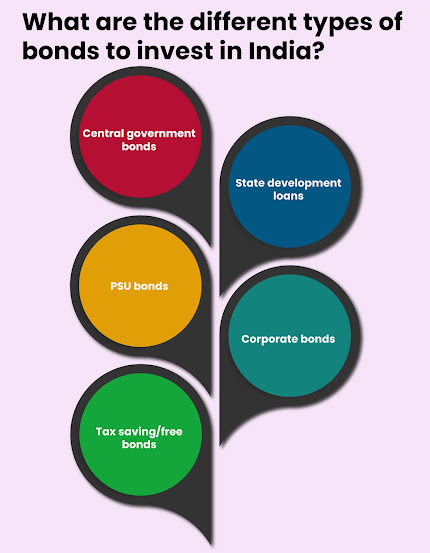Difference between tax-free bonds and tax-saving bonds
Introduction
Taxes are inevitable, but that does not mean individuals cannot plan for them. Whether individuals are business owners, freelancers, or employees, the last thing they want is to pay too much tax and deal with hefty tax returns. Income tax planning reduces income tax liability by claiming the best tax deductions and credits available. To minimise taxes, it is essential to have a good grasp of the various tax-saving and tax offsetting opportunities available. Individuals can use bonds as one of the ways to save taxes while they invest.
Income tax planning reduces income tax liability by claiming the best tax deductions
and credits available.
To minimise taxes, it is essential to have a good grasp of the various tax-saving and
tax offsetting opportunities available.
Individuals can use bonds as one of the ways to save taxes while they invest.
What are tax-free bonds and tax-saving bonds?
Tax-free bonds India are a type of government security that provides coupon and principal payment at maturity, with a tax exemption on interest earned.
Tax-saving bonds are debt instruments issued by the government, providing coupon
and principal payment at maturity, with some tax benefits.
Individuals often get confused between these two terms; however, they are not the
same.
Tax-saving bonds vs Tax-free bonds
Let us understand the dissimilarities between them.
1. Tax-free component
Tax-free bonds and tax-saving bonds are two approaches to saving money on taxes.
Tax-saving bonds offer tax benefits on the initial principal amount u/s 80CCF of the
Income Tax Act, i.e., an individual can get tax exemption on the principal amount in
vested.
Conversely, interest earned from tax-free bonds is not taxed u/s 10 of the Income
Tax Act. However, individuals will have to pay taxes on the capital gains incurred.
2. Deduction amount
In tax-saving bonds, investors can get a tax deduction on the initial principal invested
up to Rs. 20,000. Investors can claim this deduction over and above the tax deduction
of Rs. 1.5 lakh u/s 80C.
Whereas, in tax-free bonds, there is no limit on the interest income that can be claimed
as an exemption.
3. Interest rate
Another crucial point of difference is the interest rate.
Usually, tax-free bonds provide a higher interest rate (coupon) than tax-saving bonds.
To know how to invest in tax-free bonds, visit BondsIndia.com
4. Tenure
A tax-free bond is a long-term investment that has a tenure ranging from 15 to 20 years.
Conversely, tax-saving bonds are medium to long term investment bonds.
5. Lock-in period
Tax-saving bonds have a minimum lock-in period of five years, making this a
perfect choice for those who do not want to be tied in for a shorter period. On the
contrary, a tax-free bond has no lock-in period.
6. Traded on the stock exchange
The last point of difference is, which bond is traded on the stock exchange.
Tax-free bonds can be listed and traded on the stock exchange, i.e., just like a
stock, individuals can buy and sell these bonds.
Whereas, tax-saving bonds cannot be traded on the stock exchange.
Conclusion
Tax-free bonds and tax-saving bonds are both quite popular among investors.
However, the two are very different in terms of their tax treatment.
Tax-saving bonds come with a lock-in period, so they might not be suitable for
investors with settled goals. Tax-free bonds do not come with a lock-in period,
making them ideal for investors who need their investments to last a certain
number of years.
Thus, an investor is advised to be aware of the differences between the two
before deciding to invest in either.





Comments
Post a Comment